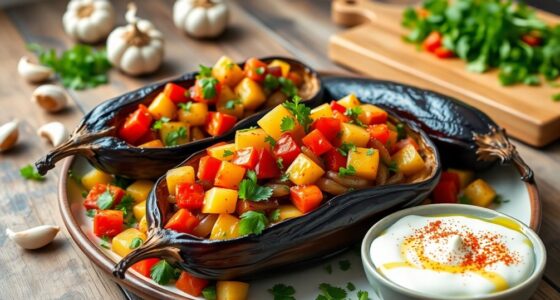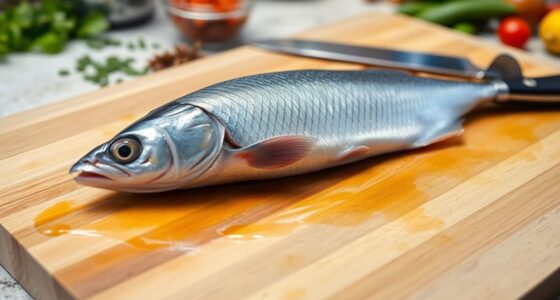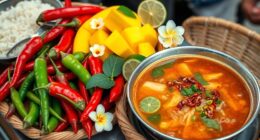Have you ever taken a bite of food that instantly transports you back to a cherished memory? Perhaps it’s a warm bowl of soup on a cold winter’s day, the sort that wraps around you like a cozy blanket. Hungarian cuisine, rich in history and flavor, does just that. With every dish, you’ll find a story, a tradition passed down through generations — from hearty goulash simmered on a family stove to the sweet pastry of somlói galuska enjoyed after a festive meal. This article invites you to savor authentic Hungarian recipes and immerse yourself in the vibrant culinary scene of Budapest. Allow your taste buds to embark on this delicious journey as you discover the top Hungarian restaurants and the bold flavors that define a culture. Are you ready to explore the heart of Hungary’s food heritage?
Key Takeaways
- Hungarian cuisine is a rich blend of historical influences and regional specialties.
- Key ingredients include paprika, meat, and seasonal vegetables.
- Goulash serves as the national dish, enjoyed any time of the year.
- Top Hungarian restaurants offer a unique opportunity to experience authentic flavors.
- Street food like lángos reflects the local culture and is widely loved.
An Introduction to Hungarian Cuisine
Hungarian food culture is a rich tapestry woven from centuries of diverse influences, each contributing to its unique flavors and dishes. The evolution of traditional Hungarian dishes can be traced back to significant historical events, shaping not only the ingredients but also cooking methods that define this vibrant cuisine today.
The Influence of History on Flavor
The roots of Hungarian cuisine delve deep into the agricultural practices of the Kingdom of Hungary, where sheep and poultry were staples. The 15th century brought Italian culinary customs, introducing ingredients like garlic, saffron, and pasta, marking a pivotal shift. The Turkish occupation in the 16th and 17th centuries introduced paprika, a spice that would become synonymous with Hungarian cooking, along with dishes such as stuffed peppers and stuffed cabbage.
By the 18th century, classic dishes like goulash and chicken paprikás emerged, reflecting a growing sense of national identity intertwined with the evolution of food. The influence of French cuisine in subsequent centuries heralded the birth of multi-course meals and refined soups, further entrenching these dishes within the Hungarian culinary landscape.
Regional Variations in Cooking
Hungary’s cuisine reveals significant regional differences driven by local ingredients and cultural traditions. In rural areas, hearty dishes dominate, showcasing robust flavors from meats and vegetables, while urban settings feature more diverse gastronomies influenced by immigration and global trends. Whether it’s exploring the spicy fish dishes of the Danube region or enjoying the comforting stews from the plains, each locale adds its personal touch to traditional Hungarian dishes.
| Region | Key Ingredients | Signature Dishes |
|---|---|---|
| Transdanubia | Fish, potatoes, herbs | Fish soup, pike stew |
| Puszta (Great Plain) | Meat, paprika, onions | Goulash, pörkölt |
| Buda (Budapest) | Pasta, seasonal vegetables | Stuffed cabbage, pasta dishes |
| Hungarian Hills | Fruits, nuts, dairy | Pies, pastries, desserts |
Understanding these regional variations allows you to appreciate the depth and diversity within Hungarian food culture, making every meal a unique experience filled with history and flavor.
Essential Ingredients in Hungarian Dishes
Hungarian cuisine thrives on the use of vibrant and flavorful ingredients, with paprika being at the forefront. Known for its dazzling colors and various tastes, paprika is crucial in creating many authentic paprika recipes. The versatility of this spice allows it to range from sweet to intensely spicy, amplifying the flavors in traditional dishes like goulash and chicken paprikás.
Paprika: The Heart of Hungarian Flavor
Paprika stands out as the most significant spice in Hungarian cooking. It enhances almost every savory dish, contributing not only to flavor but also to the characteristic red hue of many meals. This spice claims its place in numerous recipes and can be found in various forms, from sweet to hot varieties. Its prominence in the culinary landscape makes it a vital component of traditional *Hungarian cooking techniques*, allowing chefs to showcase their skills while maintaining the essence of Hungarian cuisine.
Other Core Ingredients You Should Know
Beyond paprika, a range of essential ingredients helps shape the rich tapestry of Hungarian flavors. Key elements include:
- Onions: Frequently used as a base for many dishes, their sweetness adds depth.
- Garlic: A staple in ensuring robust flavors across savory recipes.
- Sour Cream: Often served as a topping or mixed into dishes for creaminess.
- Meats: Chicken, pork, and beef are mainstays, with turkey and duck making appearances during special occasions.
- Seasonal Vegetables: These accompany many meals, especially items like potatoes and pickled vegetables during winter.
These ingredients not only enhance the taste but cultivate a nostalgic connection within the culture. Understanding how to use these fundamentals is paramount for anyone interested in perfecting *Hungarian cooking techniques* and exploring authentic paprika recipes in their own kitchens.
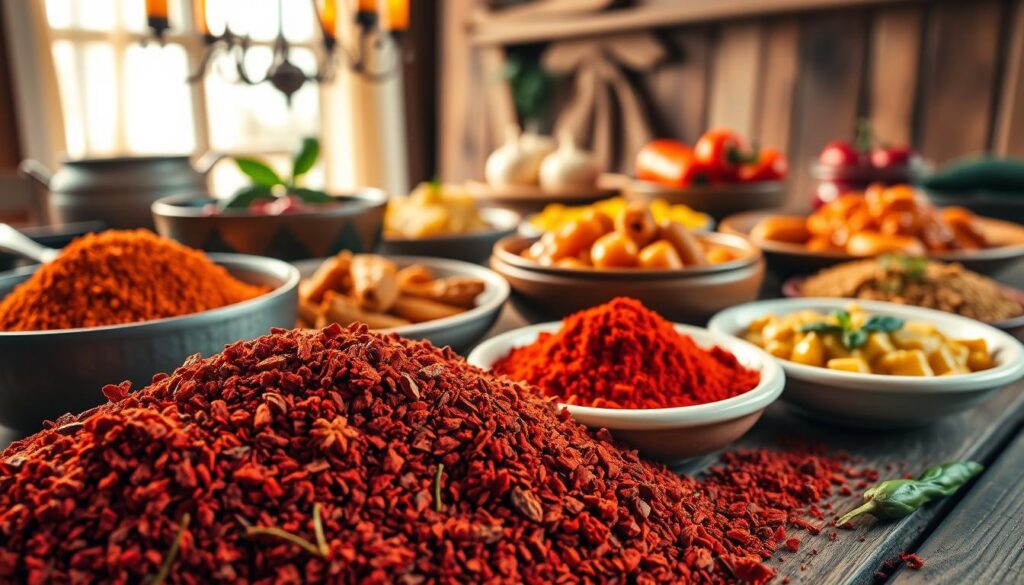
The Signature Dish: Goulash
The heart of Hungarian cuisine, hungarian goulash, embodies a rich blend of history and flavor. This iconic dish traces its origins back to the 9th century, initially prepared by Magyar shepherds. Over centuries, it has transformed from a simple meat soup into a hearty stew featuring a delightful mix of meats and vegetables. With paprika playing a starring role, you can’t truly experience authentic traditional hungarian dishes without savoring this culinary masterpiece.
How Goulash Has Evolved Over Time
Originally designed to be a practical meal for cattle herders, goulash is now enjoyed in various forms across Hungary and beyond. Traditional recipes typically require at least 1/4 cup of paprika, contributing to its vibrant flavor and signature color. The cooking process generally takes about 1 hour and 30 minutes, plus a prep time of 20 minutes, making it an approachable yet rewarding dish to create.
Variations of Goulash Across Hungary
Exploring hungarian goulash reveals myriad interpretations that reflect regional cooking styles. While classic goulash might feature beef, onions, and potatoes, variations such as babgulyás introduce beans for heartiness, and hamisgulyás offers a meatless option. For a festive outdoor affair, bográcsgulyás is prepared in a traditional kettle over an open flame, infusing it with robust flavors. The diversity doesn’t end there; alternatives like goulash served with dumplings in the Czech Republic or even adapted versions in North America highlight how this dish has traveled and transformed.

Must-Try Soup: Fisherman’s Soup
When you think of authentic Hungarian cuisine, one dish stands out: Halászlé, or Fisherman’s Soup. This delightful soup is not only a staple of traditional Hungarian dishes but also a testament to the rich culinary heritage found along Hungary’s rivers. Made primarily from fresh river fish, such as carp and zander, this soup is an explosion of flavors, thanks to the generous use of hot paprika.
The Traditional Ingredients in Halászlé
The preparation of Fisherman’s Soup showcases a variety of ingredients that contribute to its unique taste. The two main regional variations—Bajai and Szegedi—highlight different preparation methods and ingredients:
- Bajai Fisherman’s Soup: Known for its clear, bright red appearance, it includes noodles and is served without bread.
- Szegedi Fisherman’s Soup: Features a muddy, rubiginous look, and is served with fresh white bread. This version requires careful boiling to achieve a paste-like consistency before straining.
Key ingredients include:
- Various freshwater fish, such as eel, trout, roach, and carp.
- Bright red ground paprika, preferred for its authentic flavor.
- Old onions, which aid in flavor release during preparation.
Perfect Pairings for Your Soup
To fully experience the heartiness of this soup, pair it with crusty bread or rice. These sides not only balance the spice but also complement the rich flavors of the dish. When indulging in Fisherman’s Soup, it’s customary to follow your soup with a farinaceous dish, like quark pasta, enhancing a fulfilling meal.
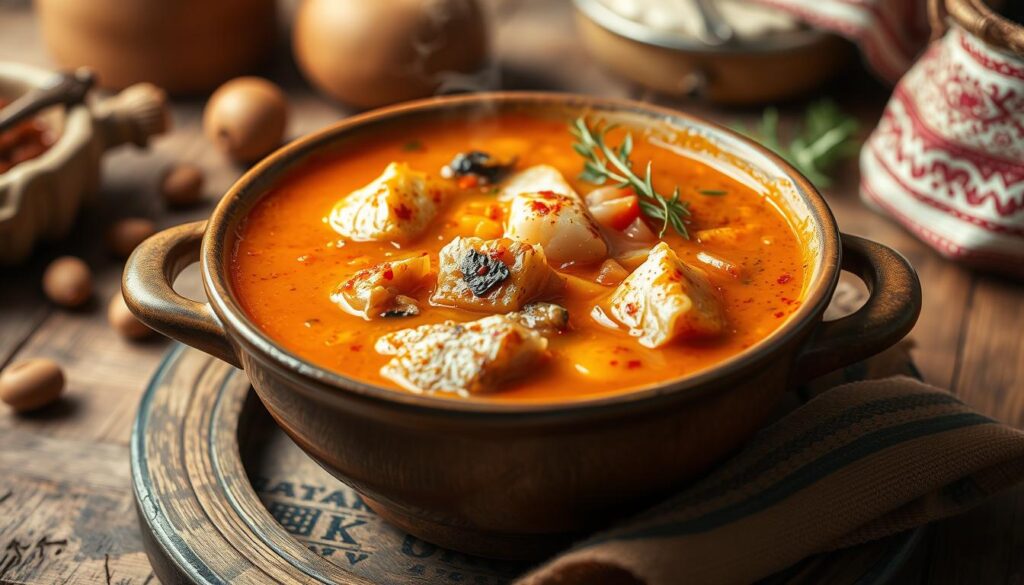
In the culinary landscape of Hungary, Fisherman’s Soup represents more than just a meal; it embodies the cultural significance of fresh water fish. Fisherman’s Soup competitions are even held, showcasing the talent of both professional chefs and home cooks. This tradition highlights the importance of this dish within Hungarian cuisine, where the preparation of such soups continues to evolve while maintaining its traditional roots.
Hearty Classics: Pörkölt and Paprikás
Two celebrated staples of authentic Hungarian recipes include Pörkölt and Chicken Paprikás, each reflecting rich flavors and hearty ingredients. These dishes showcase traditional hungarian cooking techniques that have been passed down through generations, making them favorites in many households.
Understanding Pörkölt: A Meat Lover’s Delight
Pörkölt stands as a pillar of Hungarian cuisine, often made with beef, pork, or chicken. It’s a flavorful stew enriched heavily with paprika, capturing the essence of this magnificent spice. Traditionally prepared in a cast-iron kettle over an open fire, Pörkölt brings a sense of warmth to any table.
| Ingredient | Measurement |
|---|---|
| Beef Chuck | 800 g (1.8 lb) |
| Onions | 2, halved and thinly sliced |
| Garlic | 3 cloves, peeled and chopped |
| Mild Hungarian Paprika | 3 tablespoons |
| Caraway Seeds | 2 teaspoons |
| Vegetable Stock | 300 ml |
| Tomato Passata | 180 ml |
This rich dish serves around two people and has a total cooking time of approximately three hours. It pairs well with various sides, like rice, potatoes, or pasta, providing versatility for any meal. Each serving generally contains about 479 calories, high protein, and essential nutrients such as Vitamin A and Iron.
Chicken Paprikás: A Family Favorite
Chicken Paprikás is another beloved dish that highlights the wonderful use of paprika. This meal features tender chicken simmered in a creamy, richly flavored sauce. Often accompanied by dumplings, it perfectly encapsulates the comfort of authentic Hungarian recipes.
Preparation takes around 15 minutes, with a cooking time of about 2 hours, resulting in a dish that’s both comforting and full of flavor. Rich in calories (approximately 300), Chicken Paprikás is a delightful dish that showcases traditional hungarian cooking techniques, promoting a strong sense of family and community during mealtime.
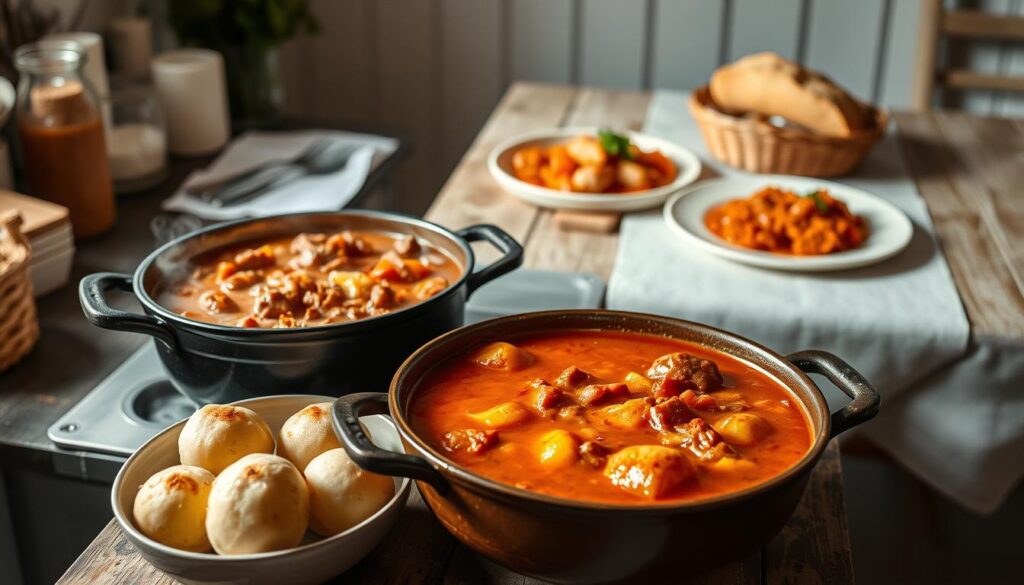
Savory Pastries: Langos and Rétes
Exploring the delightful world of Hungarian pastries reveals two stars that shine brightly in the local culinary scene: Lángos and Rétes. Both have a special place in the hearts of locals and visitors alike, particularly throughout the vibrant Budapest culinary scene. These savory bites showcase not only unique flavors but also the rich traditions of Hungary.
What to Expect from Hungarian Langos
Lángos is a beloved deep-fried flatbread, often topped with an array of ingredients that enhance its flavor profile. Typically enjoyed as a snack or a light meal, it can be slathered with garlic, cheese, or tangy sour cream. On busy streets, you’ll see it being prepared fresh, with the aroma tempting passersby. The average serving size is around 250 grams, delivering roughly 300-400 calories, depending on your choice of toppings. With a price tag of about 150-200 HUF, it’s an affordable treat you can’t miss while visiting the top Hungarian restaurants.
The Sweetness of Hungarian Rétes
On the sweeter side, Rétes, or Hungarian strudel, showcases a flaky pastry filled with various sweet delights like apple, sour cherry, or poppyseed. Over 10 different fillings grace local bakeries, each offering its own unique taste. Often dusted with powdered sugar, Rétes has become a staple dessert preferred by many. The preparation takes nearly 2 hours, including the resting of the dough, but the resulting pastry is well worth the wait. Often found at charming cafés throughout Budapest, a slice of this heavenly delight typically costs between 200-400 HUF.

Unique Side Dishes: Káposzta and Hortobágyi
When exploring traditional Hungarian dishes, side dishes hold a vital role in enhancing flavors and providing additional texture. Káposzta and Hortobágyi are two exemplary offerings that illustrate the rich tapestry of Hungarian food culture. Each dish showcases unique ingredients and preparation techniques that contribute to an authentic dining experience.
Thrice-Cooked Cabbage: Káposzta
Káposzta, or thrice-cooked cabbage, epitomizes the artistry involved in traditional Hungarian cooking. This dish involves cooking cabbage multiple times to deepen its flavor, often found in colder months as a comforting staple. It plays a significant role in layered dishes like Rakott káposzta, combining cabbage with pörkölt, rice, and sour cream for a delightful fusion. The importance of cabbage extends beyond this dish, with variations including stuffed cabbage (Töltött káposzta) and Székelygulyás, enriching the landscape of Hungarian cuisine.
Hortobágyi Palacsinta: Savory Crepes Filled with Goodness
Hortobágyi palacsinta represents the heartiness of Hungarian cuisine through its savory pancakes filled with flavorful meat, typically veal. Prepared using a stewing method, this dish incorporates spices like paprika, akin to pörkölt, enriching its taste profile. Topped with a paprika sauce, these crepes serve as a delightful complement to any meal, showcasing the versatility of traditional Hungarian dishes. Together with Káposzta, these side dishes offer insight into the depth of flavors found in Hungarian food culture.
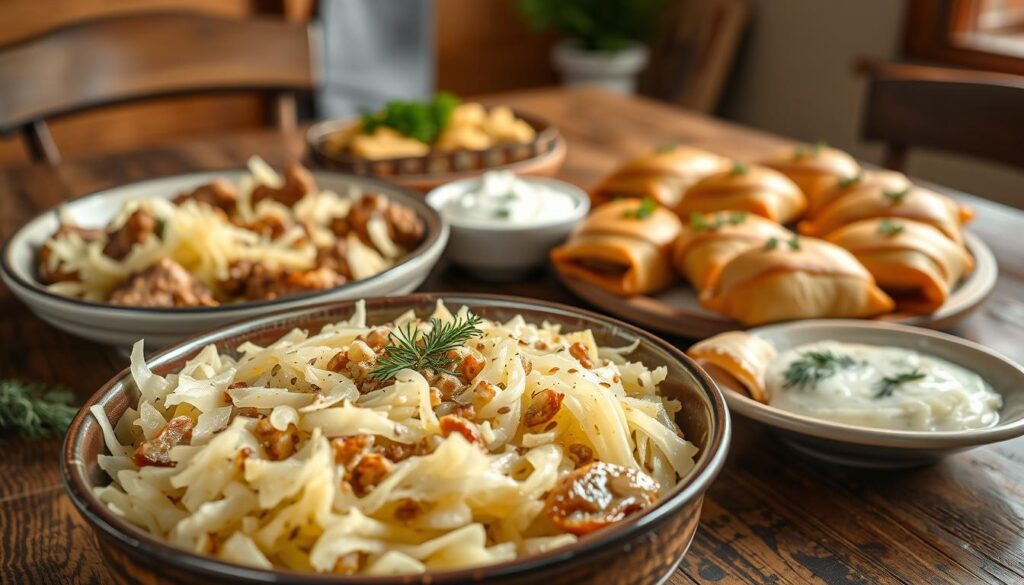
A Taste of Dessert: Dobos Torte
The Dobos Torte is a true masterpiece of authentic Hungarian recipes. This layered cake, consisting of six thin layers of buttery sponge and five layers of rich chocolate buttercream, is a staple of Hungarian cuisine. Traditionally topped with a hardened caramel layer, this delightful dessert has a fascinating history that goes back to its debut in 1885.
How to Make Your Own Dobos Torte at Home
Recreating this iconic dessert at home can be a rewarding experience. The ingredients include:
- 6 eggs for the cake
- 4 eggs for the chocolate buttercream
- 200 grams of butter
- 275 grams of confectioner’s sugar
- 300 grams of dark chocolate
- 150 grams of sugar for caramel
- 3 tablespoons of water and 2 teaspoons of lemon juice for the caramel topping
Baking the sponge cake requires patience, as it’s typically made layer by layer, with each sponge baked for 5-7 minutes at 180°C until golden brown. The caramel layer not only adds a beautiful finish but also enhances the cake’s shelf-life, resonating with the innovations introduced when it was first created.
Other Hungarian Desserts You Should Try
If you enjoy Dobos Torte, there are other delightful treats within Hungarian cuisine that you should not miss. Consider trying:
| Dessert | Description |
|---|---|
| Túró Rudi | A sweet quark cheese bar covered in chocolate. |
| Somlói Galuska | A layered sponge cake with chocolate sauce and whipped cream. |
| Beigli | A traditional rolled pastry filled with poppy seeds or walnuts. |

Each of these desserts offers a unique taste of authentic Hungarian recipes, allowing you to explore the rich and diverse flavors of Hungarian cuisine. Enjoy the journey into the world of Hungarian sweets, and don’t hesitate to experiment with making them at home.
The Role of Wine in Hungarian Cuisine
In Hungarian food culture, wine serves as a vital companion to traditional Hungarian dishes. Hungary boasts a rich winemaking heritage, with diverse regions producing a variety of excellent wines that enhance the flavors of classic meals. Understanding the significance of pairing these wines with food can make your culinary experience more enjoyable and memorable.
Famous Hungarian Wines to Pair with Meals
Hungarian wines are diverse, with each region offering unique varieties. For instance, a fresh, mineral, full-bodied, barrel-aged white wine pairs beautifully with light meat dishes. When you are savoring chicken or turkey, lighter dry white wines like the 1014 Irsai Olivér from Dubicz Winery or the 2020 Grüner Veltliner from Gobri Winery enhance the dining experience.
| Dish Type | Recommended Wine |
|---|---|
| Light Meat Dishes | Fresh, mineral, full-bodied, barrel-aged white |
| Chicken & Turkey | 1014 Irsai Olivér, 2020 Grüner Veltliner |
| Pork Dishes | Barrel-aged dry white or acid-emphasized red |
| Red Meats & Game | 2015 Syrah, 2011 Padok II |
The Importance of Tokaji Aszu
Among the array of excellent Hungarian wines, Tokaji Aszú shines brightly, often referred to as the “king of wines and wine of kings.” This dessert wine derives its unique sweetness and complexity from grapes affected by noble rot, making it the perfect accompaniment for traditional desserts like Rigó Jancsi. Notable vintages such as the 2016 Sweet Szamorodni and the 2016 Tokaji Aszú from Naár Winery exemplify the sweetness that complements many favorite desserts.

Along with Tokaji, Egri Bikavér, known as “Bull’s Blood,” offers a robust red wine experience, specifically well-suited for hearty dishes like goulash, which is seasoned with paprika. When enjoying spicier dishes like halászlé (fisherman’s soup), the crisp and fruity notes of Furmint balance the richness perfectly. With this understanding of various pairing options, you can elevate your appreciation of Hungarian food culture and the traditional dishes that represent this rich culinary heritage.
Popular Street Foods in Hungary
The vibrant Budapest culinary scene offers an array of street food delights that reflect the rich Hungarian food culture. You can discover delectable flavors at local markets and food stalls, making street food an essential part of any culinary journey in Hungary. Here, you’ll find both sweet and savory treats that highlight the nation’s love for bold flavors and unique ingredients.
Discovering the Joy of Kürtőskalács
The iconic Kürtőskalács, widely known as chimney cake, is a must-try sweet treat. Found at Christmas markets and pop-up stands throughout Budapest, this delicacy boasts a crispy exterior and soft interior, often coated in sugar or topped with various flavors. It’s a seasonal favorite that captures the essence of Hungarian sweetness and is perfect for a warm snack during chilly days.
Other Must-Eat Street Foods
In addition to Kürtőskalács, several other popular street food items define the landscape of Budapest’s street food. Lángos is a quintessential choice—deep-fried flatbread slathered with garlic, sour cream, and cheese. It’s perfect for summer days and available at numerous stands, including the Central Market Hall and Karavan Street Food Court.
For a heartier option, gulyás (goulash) is typically served as a soup, with takeaway spots like Finomótó Kantin offering delicious variations. Vegetarian offerings are on the rise, such as the modern interpretations of fried cheese, commonly found at places like Paneer. Kolbász (spicy sausage) and hurka (blood pudding) are also street favorites, underscoring the meat-centric aspect of Hungarian food culture.
During your visit, don’t miss trying other unique delicacies like kenyérlángos and tócsni at local street festivals, especially in parks like City Park. Whether exploring a busy food court or enjoying a quieter farmer’s market, the street food scene in Budapest promises an authentic taste of this vibrant city’s culinary traditions.

| Street Food | Description | Where to Find It |
|---|---|---|
| Kürtőskalács | Crispy outer layer with a soft inside, coated in sugar | Christmas markets, pop-up stands |
| Lángos | Deep-fried flatbread topped with garlic, sour cream, and cheese | Central Market Hall, Karavan Street Food Court |
| Gulyás | Hearty soup typically made with meat and vegetables | Finomótó Kantin and various takeaway soup places |
| Fried Cheese | Modern twists on deep-fried cheese sandwiches | Paneer in Király utca, Karavan Street Food Court |
| Kolbász | Spicy sausage served at street stalls | Various street vendors |
| Hurkara | Traditional blood pudding served on the streets | Local street food stalls |
Embracing Vegetarian Hungarian Cuisine
While traditional Hungarian cuisine features a myriad of meat-based dishes, a vibrant vegetarian scene is blossoming in Hungary’s capital, Budapest. The city’s cosmopolitan nature has paved the way for various culinary innovations and adaptations. As you explore vegetarian options, you will find delightful meat-free dishes that maintain the authentic flavors of Hungarian cooking.
Delicious Meat-Free Options to Savor
In vegetarian Hungarian cuisine, dishes like Főzelék (vegetable stew) and Lecsó (vegetable ratatouille) serve as excellent choices. Restaurants have started to offer modified traditional dishes, ensuring everyone can partake in the joys of authentic Hungarian recipes. Venues like Edeni Vegan impress guests with their buffet-style service of traditional dishes modified to suit vegan preferences. Kozmosz stands out by achieving a 100% vegan menu while keeping the spirit of Hungarian cuisine alive.
Encouraging Local Ingredients in Cooking
Utilizing local ingredients plays a pivotal role in creating delicious vegetarian dishes. Many restaurants focus on sourcing fresh produce from nearby farms, showcasing the best of Hungary’s agricultural bounty. Establishments like Oh My Green emphasize gluten-free and vegan options, contributing to the diverse culinary landscape in Budapest. This trend allows patrons to enjoy the rich flavors of authentic Hungarian recipes while accommodating contemporary dietary needs.

| Restaurant | Specialties | Dietary Options |
|---|---|---|
| Kozmosz | Vegan versions of traditional dishes | 100% vegan |
| Edeni Vegan | Buffet-style traditional dishes | Vegan |
| Oh My Green | Gluten-free products | Gluten-free, vegan |
| Free Bakery | Allergen-free options | Gluten-free, dairy-free, soy-free, egg-free |
| Mazi Greek Kitchen | Variety of vegetarian dishes | Vegetarian |
Cooking Hungarian at Home
If you want to bring the rich and flavorful world of Hungarian cuisine into your kitchen, starting with the right tools and authentic ingredients is essential. Understanding some basic hungarian cooking techniques will help you replicate those beloved authentic Hungarian recipes you might have tried at a local restaurant or during your travels. Here’s how to set yourself up for success.
Essential Tools for Your Kitchen
Having the correct utensils can make a significant difference in your cooking experience. Here are some essential tools you should consider:
- Heavy Pot or Dutch Oven: Perfect for slow-cooking dishes like goulash, ensuring even heat distribution.
- Sharp Knives: Essential for chopping vegetables and preparing meats, enhancing efficiency in your preparation.
- Cutting Boards: A quality cutting board can make food prep easier and safer.
- Measuring Cups and Spoons: Key for accurately following authentic Hungarian recipes.
- Colander: Useful for draining pasta or vegetables to achieve the right consistency in dishes.
Sourcing Authentic Ingredients
For authentic Hungarian flavors, it’s important to use high-quality and traditional ingredients. Here are a few staples to keep stocked:
- Paprika: This is the heart of Hungarian cooking, adding both color and distinct flavor to various dishes.
- Specialty Meats: Look for quality pork and beef cuts for dishes like pörkölt or goulash.
- Fresh Produce: Use seasonal vegetables for side dishes and salads, enhancing the overall meal quality.
- Sour Cream: A common ingredient in many authentic Hungarian recipes, providing creaminess and tanginess.
- Homemade Noodles: If you can make nokedli, it will bring freshness to meals like Chicken Paprikas.
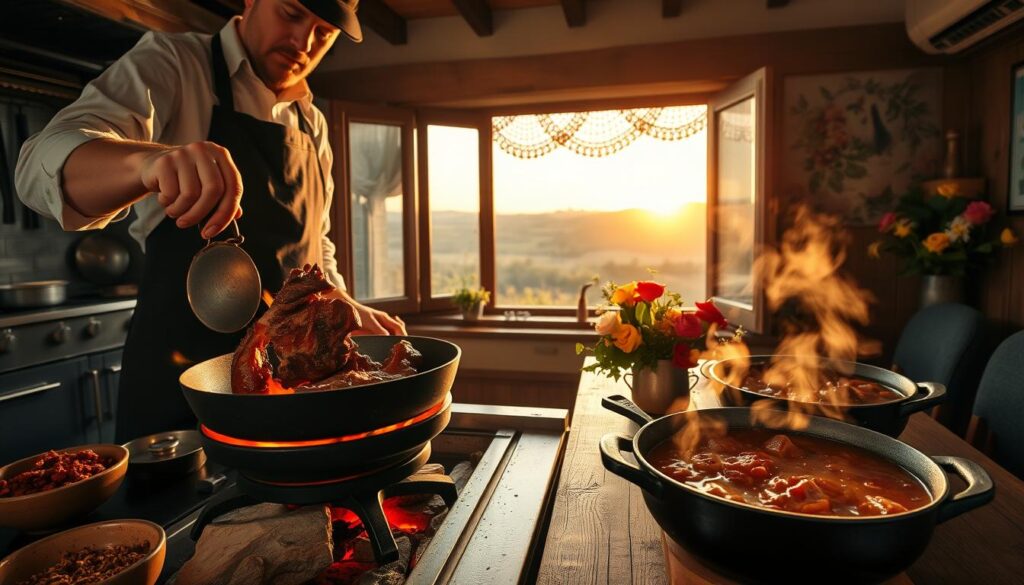
By utilizing the right tools and sourcing ingredients properly, your attempts at Hungarian cooking will be more authentic and enjoyable. Immerse yourself in the flavors of Hungary, and experiment with these traditional techniques. Happy cooking!
Dining Etiquette in Hungary
Understanding dining etiquette is essential to enjoying the rich experience of Hungarian food culture. Respecting local customs enhances your meal, making it both enjoyable and meaningful. Preparation for dining out in Hungary involves recognizing specific habits that may differ from other cultures.
What You Should Know Before You Eat Out
In Hungary, meals usually commence only after the host invites everyone to begin. The most common toast is “kedves egeszsegere,” which means “to your health.” You should expect to make a toast at least once in small groups, particularly if you are the guest of honor. Observing the placement of utensils is important; knives should be held in the right hand, while forks stay in the left. When finished, place them parallel in the center of your plate. Hands should remain visible above the table with wrists resting on the edge, and food must be passed to the left.
Traditional Hungarian Celebratory Meals
Celebratory meals often feature communal platters, allowing everyone to partake in traditional Hungarian dishes family-style. It is crucial to adhere to the etiquette that the oldest woman or most honored guest is served first. In informal settings, sharing tables is common, but do not feel obliged to engage in forced conversation. For a true taste of local customs, take part in the tradition of toasting; the guest of honor typically proposes the first toast, often saluting the health of individuals present.
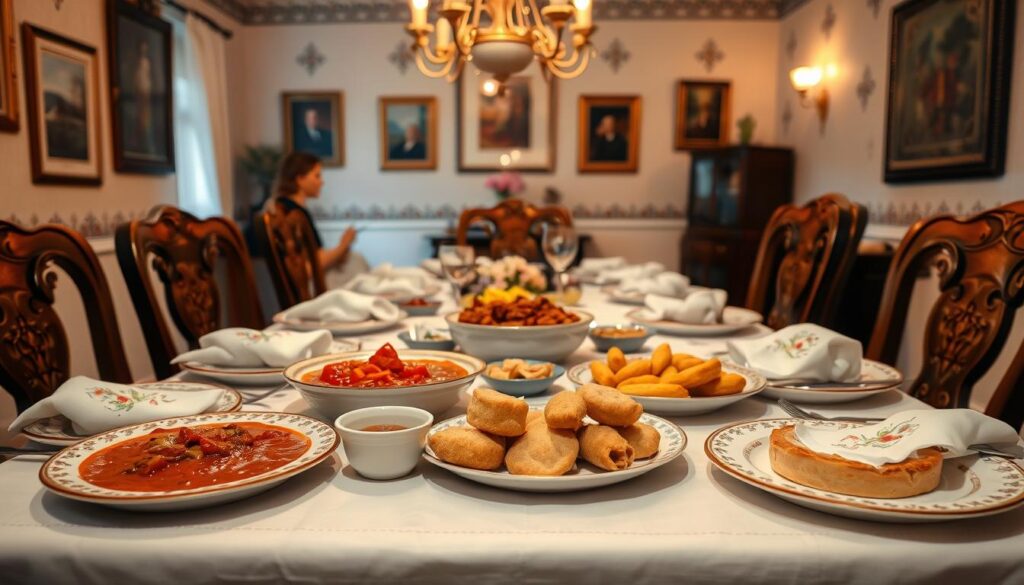
| Dining Etiquette | Description |
|---|---|
| Utensil Placement | Utensils should be placed parallel in the middle of the plate when finished. |
| Toasting | Expect to make at least one toast, typically initiated by the guest of honor. |
| Starting Meals | Begin eating only after the host invites everyone to start. |
| Position at the Table | The most honored position is at the head, with important guests seated to the right of the host. |
| Tip Expectations | Standard tip is 10%, left at the cashier rather than on the table. |
Exploring Traditional Hungarian Taverns
When you think of traditional Hungarian taverns, the unique atmosphere of ruin bars in Budapest comes to mind. These quirky venues blend history with modernity, creating spaces where locals and visitors can indulge in culinary delights. The growth of the Budapest culinary scene over the past decade has brought high-quality local ingredients to these establishments, transforming your dining experience into an unforgettable journey through Hungarian cuisine.
Finding the Best Ruin Bars in Budapest
Ruin bars are not just a trend; they represent a cultural hub within the vibrant city of Budapest. Many of these spots, such as Szimpla Kert and Fogas Ház, offer an eclectic mix of decor featuring art, music, and community events. Here, you can savor dishes from some of the top Hungarian restaurants, showcasing flavors that highlight local ingredients like paprika, cherries, and various proteins. Enjoying a meal in these taverns allows you to discover traditional dishes, while also experiencing the lively energy that makes Budapest a culinary hotspot.
The Atmosphere and Experience of Dining Out
The charm of dining in a ruin bar lies not only in the food but also in the overall ambiance. You may find yourself surrounded by whimsical decor, vibrant murals, and the sounds of live music. This environment encourages a relaxed exploration of the diverse offerings available, from savory Hungarian stews to delectable desserts. Dining in these establishments is more than just a meal; it introduces you to the heart of Hungarian culinary traditions. You have the opportunity to taste classic dishes like goulash or stuffed cabbage while immersing yourself in the local culture, truly making it a memorable experience.
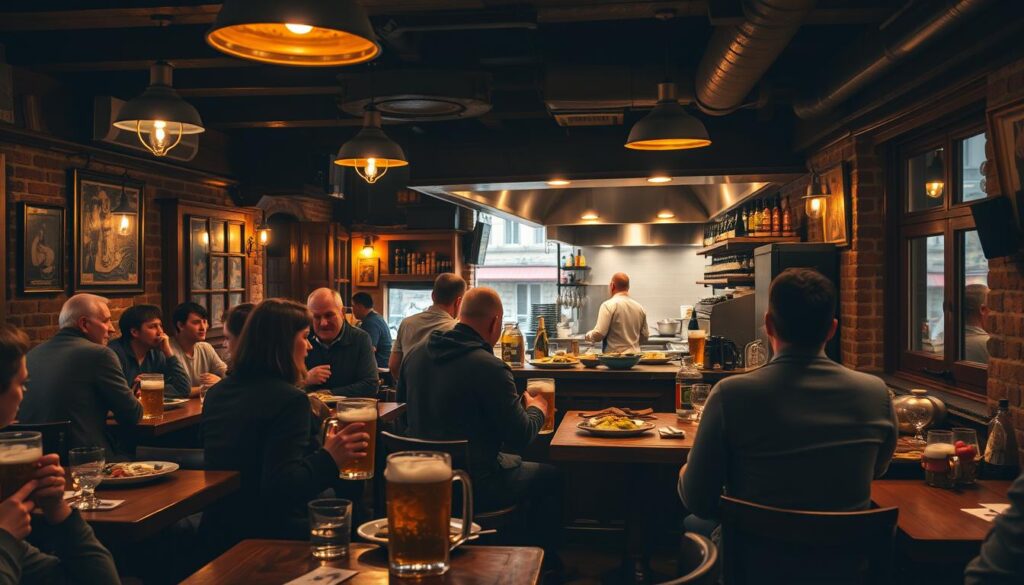
Honoring Hungarian Culinary Traditions
Experiencing authentic Hungarian recipes and embracing Hungarian food culture is an enriching journey that connects you to the heart of Hungary. Engaging with these traditions through food festivals and cooking classes offers a deeper appreciation of the country’s vibrant culinary landscape. Not only do these activities allow you to taste delicious dishes, but they also provide valuable insights into the historical influences that shape Hungarian cuisine.
Participating in Food Festivals and Events
Hungary hosts numerous food festivals throughout the year, celebrating its rich culinary heritage. These events showcase traditional dishes while promoting local ingredients that are vital to the flavors of authentic Hungarian recipes. You can indulge in various delicacies such as gulyás, pörkölt, and sweet pastries that reflect the diverse regional variations across the country.
Learning to Cook Hungarian Recipes
Joining cooking classes is a fantastic way to learn the techniques and secrets behind traditional Hungarian dishes. Understanding the unique spice blends, especially the importance of paprika, enriches your culinary skills. You will master slow-cooking methods and discover how to incorporate locally sourced ingredients that make these recipes shine. This hands-on experience not only enhances your cooking but also nurtures a connection to Hungarian food culture.

| Activity | Description | Benefits |
|---|---|---|
| Food Festivals | Celebrations of Hungarian cuisine with local dishes and music. | Exposure to a variety of authentic flavors and cultural practices. |
| Cooking Classes | Hands-on classes teaching traditional recipe preparation. | Improve your cooking skills and gain confidence with authentic techniques. |
| Local Farmers’ Markets | Markets showcasing local produce and ingredients. | Support local farms and learn about key ingredients in Hungarian cooking. |
Conclusion: Your Culinary Journey Awaits
Embracing Hungarian cuisine invites you to explore a world of rich flavors and comforting dishes that celebrate the country’s vibrant culinary heritage. From indulging in the national dish, goulash, to savoring the crispy delights of lángos, every bite reflects Hungary’s unique culinary story. Whether you’re enjoying these dishes in the heart of Budapest or recreating authentic Hungarian recipes in your home kitchen, each experience is sure to create lasting memories.
Encouraging You to Try Hungarian Cuisine
As you embark on your culinary adventure, let the flavors of Hungarian cuisine inspire you. Don’t hesitate to try making traditional dishes like chicken paprikás or the delightful Dobos cake, which has evolved over the years with countless flavors and fillings. With abundant local ingredients like paprika and fresh fish, you will find joy in mastering authentic Hungarian recipes that resonate with the warmth of Hungarian culture.
Resources to Expand Your Hungarian Cooking Skills
To enhance your skills further, consider exploring cookbooks dedicated to Hungarian cooking or enrolling in online cooking classes that focus on traditional dishes. Budapest is a treasure trove of culinary schools offering hands-on experiences where you can learn to prepare time-honored recipes. With these resources at your fingertips, your journey into the heart of Hungarian cuisine will be both rewarding and delicious.




